PCV valve vs check valve
#1
I'm trying to keep a very clean engine bay on my 36' Chevy coupe frame off resto that has a modified 2004 Tahoe 5.3l Gen III. Every hose on the engine is SS braided and all connections use AN fittings, literally every connection. I only have the dirty side of the PCV system left to tie up and the engine is complete. I am utilizing a catch can on the dirty side and have spent countless hours looking for a PCV valve that has -6AN fittings but am unable to locate one. I did find a one way check valve that takes only a few psi to open and has the -6AN fitting connections but I'm not sure this will work in place of a true PCV. As the normal operation of a PCV is progressive in that the valve opens/closes accordingly with rpm, I'm thinking this check valve won't work. Anybody tried this in the past? Results?
#2
TECH Veteran
iTrader: (1)
well if you dont have emissions to worry with, your main objective is to simply let the crankcase breath. If you can provide vacuum to the crankcase, then thats even better. My crankase evac consists of a couple lines from the engine going to a vented catch can, no vacuum being pulled on it as of right now.
#3
11 Second Club
iTrader: (3)
I'm trying to keep a very clean engine bay on my 36' Chevy coupe frame off resto that has a modified 2004 Tahoe 5.3l Gen III. Every hose on the engine is SS braided and all connections use AN fittings, literally every connection. I only have the dirty side of the PCV system left to tie up and the engine is complete. I am utilizing a catch can on the dirty side and have spent countless hours looking for a PCV valve that has -6AN fittings but am unable to locate one. I did find a one way check valve that takes only a few psi to open and has the -6AN fitting connections but I'm not sure this will work in place of a true PCV. As the normal operation of a PCV is progressive in that the valve opens/closes accordingly with rpm, I'm thinking this check valve won't work. Anybody tried this in the past? Results?
#4

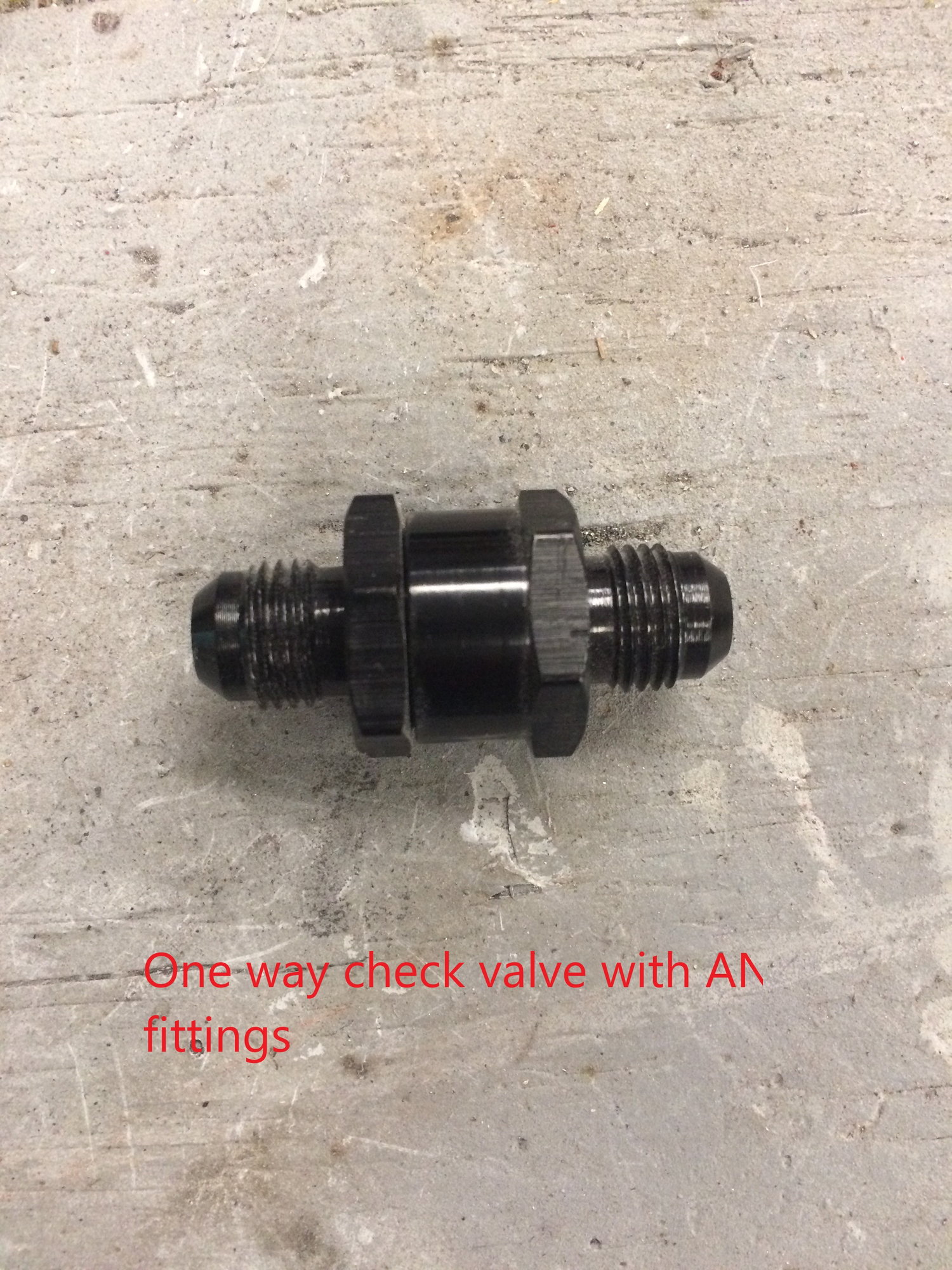
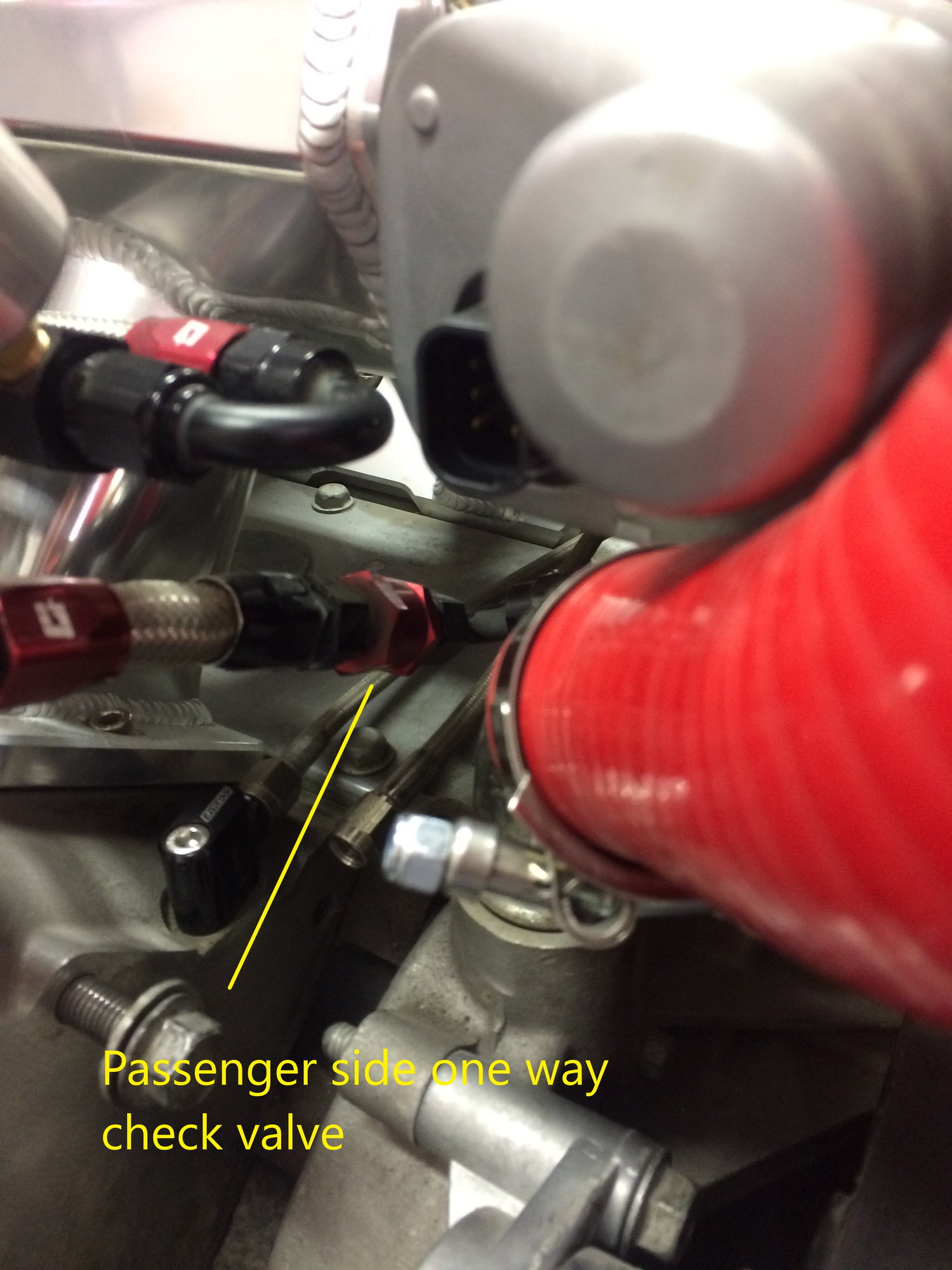
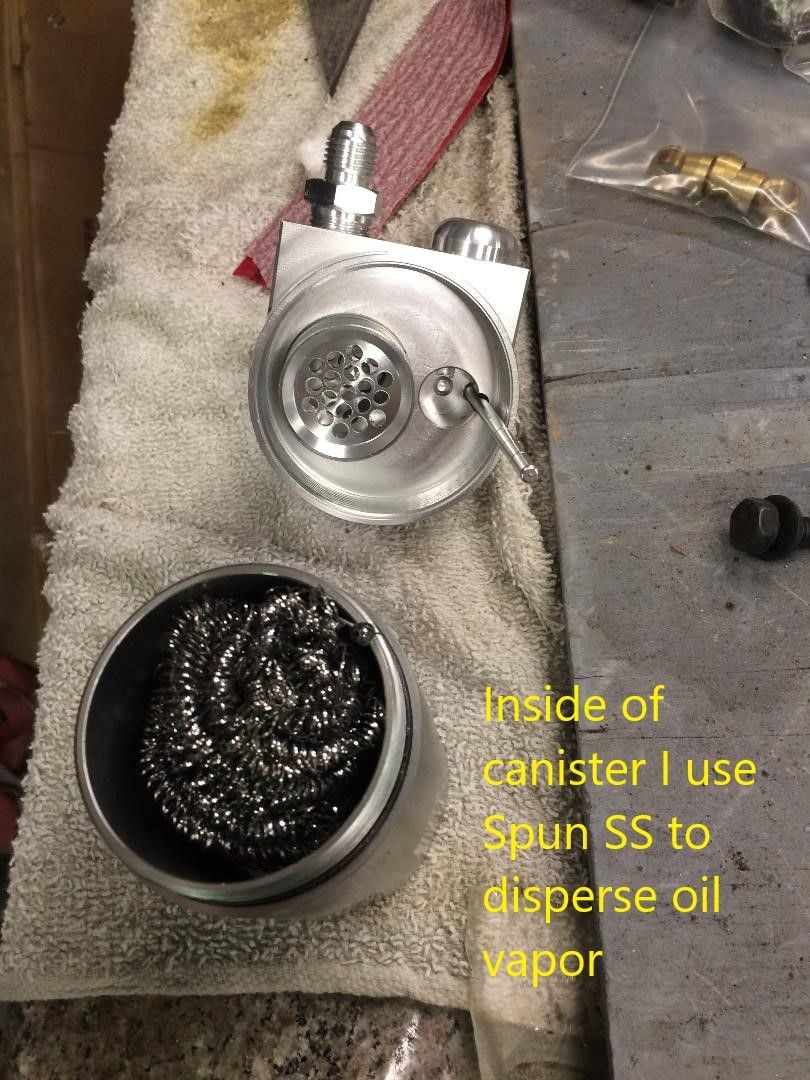
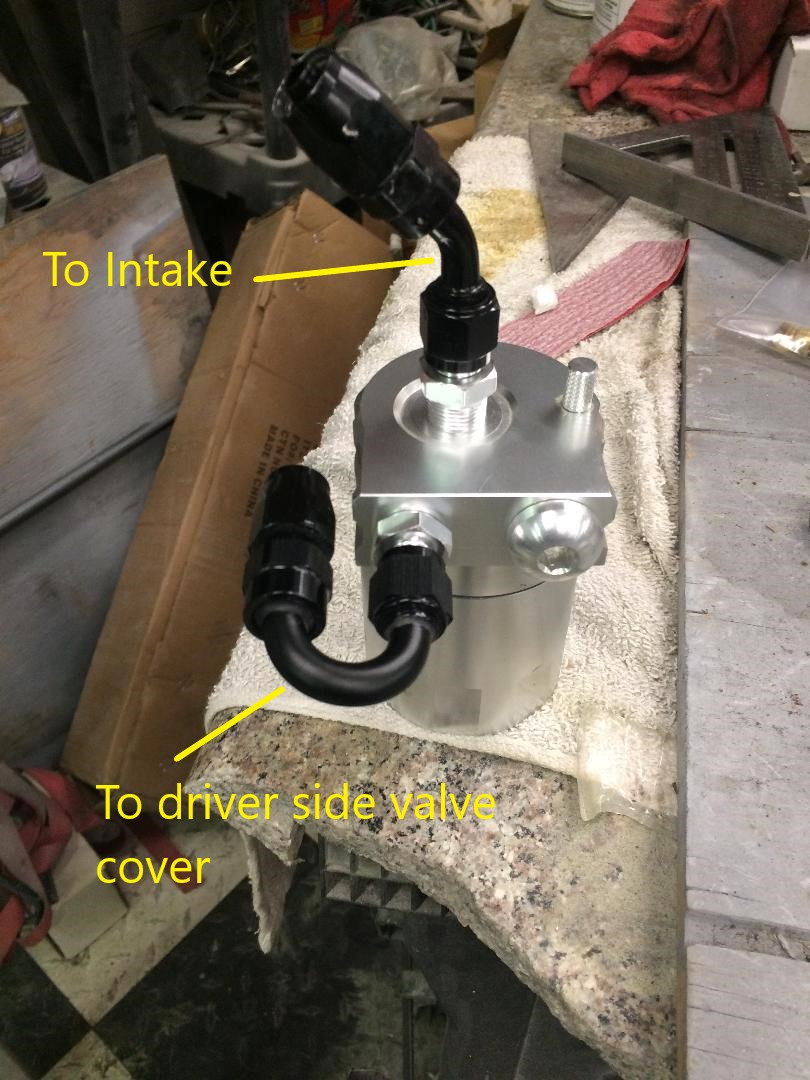
6AN lines should be large enough for the 5.3 as my 7.0 has 10AN of each valve cover to a breather can. If it where me and I just absolutely had to run PCV "Pollution Controlled Vehicle" and yes I'm making that up but its really the truth about PCV when you think about it but I would just route the lines as factory. You probably don't have the LS6 valley cover which has a built in PCV valve/baffle so the PCV valve is in the hose connecting the valve covers to the intake manifold. If running a sealed catch can run the lines from the valve covers to the inlet on the catch can and connect the PCV valve to the line coming from the outlet on the catch can to the intake manifold. If your passenger valve cover has two ports the front port connects to the throttle body and you might consider running a check valve on that one.
#5
TECH Resident
For later trucks the pcv valve doesn't have a valve inside. It's just a small hole that allows air to pass without allowing much oil through. It was a cheap way to solve excessive oil consumption. The idea of progressive opening rates isn't something gm seems to care about.
The entire point of the pcv valve is just to prevent a backfire from entering the oil soaked areas (some called them flame arrestors back in the day). Back when cars ran breathers connected to the air filter housing it was common to have an oil soaked foam filter sitting a few inches from the carb. It was a risk, but none of the manufacturers felt that nervous about it. That said, if you intend on working it into the system then make sure you have it after the catch can or else a backfire can turn the catch can into a mini bomb.
The entire point of the pcv valve is just to prevent a backfire from entering the oil soaked areas (some called them flame arrestors back in the day). Back when cars ran breathers connected to the air filter housing it was common to have an oil soaked foam filter sitting a few inches from the carb. It was a risk, but none of the manufacturers felt that nervous about it. That said, if you intend on working it into the system then make sure you have it after the catch can or else a backfire can turn the catch can into a mini bomb.
#6
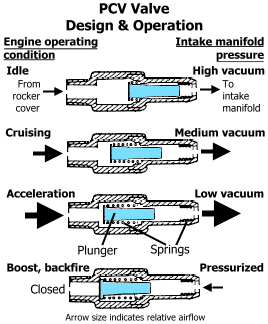
For later trucks the pcv valve doesn't have a valve inside. It's just a small hole that allows air to pass without allowing much oil through. It was a cheap way to solve excessive oil consumption. The idea of progressive opening rates isn't something gm seems to care about.
The entire point of the pcv valve is just to prevent a backfire from entering the oil soaked areas (some called them flame arrestors back in the day). Back when cars ran breathers connected to the air filter housing it was common to have an oil soaked foam filter sitting a few inches from the carb. It was a risk, but none of the manufacturers felt that nervous about it. That said, if you intend on working it into the system then make sure you have it after the catch can or else a backfire can turn the catch can into a mini bomb.
The entire point of the pcv valve is just to prevent a backfire from entering the oil soaked areas (some called them flame arrestors back in the day). Back when cars ran breathers connected to the air filter housing it was common to have an oil soaked foam filter sitting a few inches from the carb. It was a risk, but none of the manufacturers felt that nervous about it. That said, if you intend on working it into the system then make sure you have it after the catch can or else a backfire can turn the catch can into a mini bomb.
Yes your correct,I meant to say the check valve (PCV) will be going from the catch can output side to the intake, brain is fried this morning. I've decided to go ahead with this 6AN one way check valve since I am running a catch can just to give it a shot. I have on hand a new and true PCV valve for an inline setup and after comparing the two there just doesn't seem to be a lot of difference when I blow through each of them. I know this is not very scientific and maybe I am missing something here but unless somebody can come up with a more specific reason not to give this a try I'm all in. Also too me this is what resto-modding is all about, finding out what can and can't be done. At the least, if there is a problem with idle or acceleration I'll know where to look. Attached is a diagram I just found that explains idle to acceleration during PCV better than I can. Thank you for your input! BTW, I remember those old car breather set ups as well, yes I am that old.
#7
well if you dont have emissions to worry with, your main objective is to simply let the crankcase breath. If you can provide vacuum to the crankcase, then thats even better. My crankase evac consists of a couple lines from the engine going to a vented catch can, no vacuum being pulled on it as of right now.
My main concern is oil deposits on the intake and intake runners due to blow by. I'm not setting this build up for street racing, just want to have a little fun now and then when I hit down on it.
Trending Topics
#8
TECH Resident
What do you consider high miles? I'm a bit over 200k at the moment and don't have signs of blow by. At the same time all the gen 2 and 3 engines I've seen have dumped a lot of oil in the intake since the pcv system from the factory kinda sucks. I'd try sucking on the pcv and on the check valve and see what it takes to open it. Since it runs on vacuum suction will give you a better idea if they match. I'm betting they do.
#9
What do you consider high miles? I'm a bit over 200k at the moment and don't have signs of blow by. At the same time all the gen 2 and 3 engines I've seen have dumped a lot of oil in the intake since the pcv system from the factory kinda sucks. I'd try sucking on the pcv and on the check valve and see what it takes to open it. Since it runs on vacuum suction will give you a better idea if they match. I'm betting they do.
#10
TECH Resident
Let us know how it works. I'm sure others are looking for the same info. I imagine it'll work out fine, but I haven't done it so I'm just going off theory instead of practice.
It's actually been a few years since I last played with pcv swapping. I spent weeks finding a valve with similar dimensions and spring rate to stock but with the angle I wanted. Then I had to buy almost a dozen grommets to get something that fit the intake and new valve. In the end my Buick 455 had a pcv from a dodge and a grommet for a ford lol
It's actually been a few years since I last played with pcv swapping. I spent weeks finding a valve with similar dimensions and spring rate to stock but with the angle I wanted. Then I had to buy almost a dozen grommets to get something that fit the intake and new valve. In the end my Buick 455 had a pcv from a dodge and a grommet for a ford lol
#11
11 Second Club
iTrader: (3)
Your setup looks great and hopefully it will keep the vapor/smoke/water/oil out of the intake manifold and from mixing with your air/fuel mixture affecting the overall performance and over time gum up the intake or cylinder heads. When you start sucking on the valve covers via the intake manifold and throttle body by way of a sealed system I find it hard to believe that its not still getting in there. Looks cleaner and you won't smell the odor or see what is actually making its way in.
#12
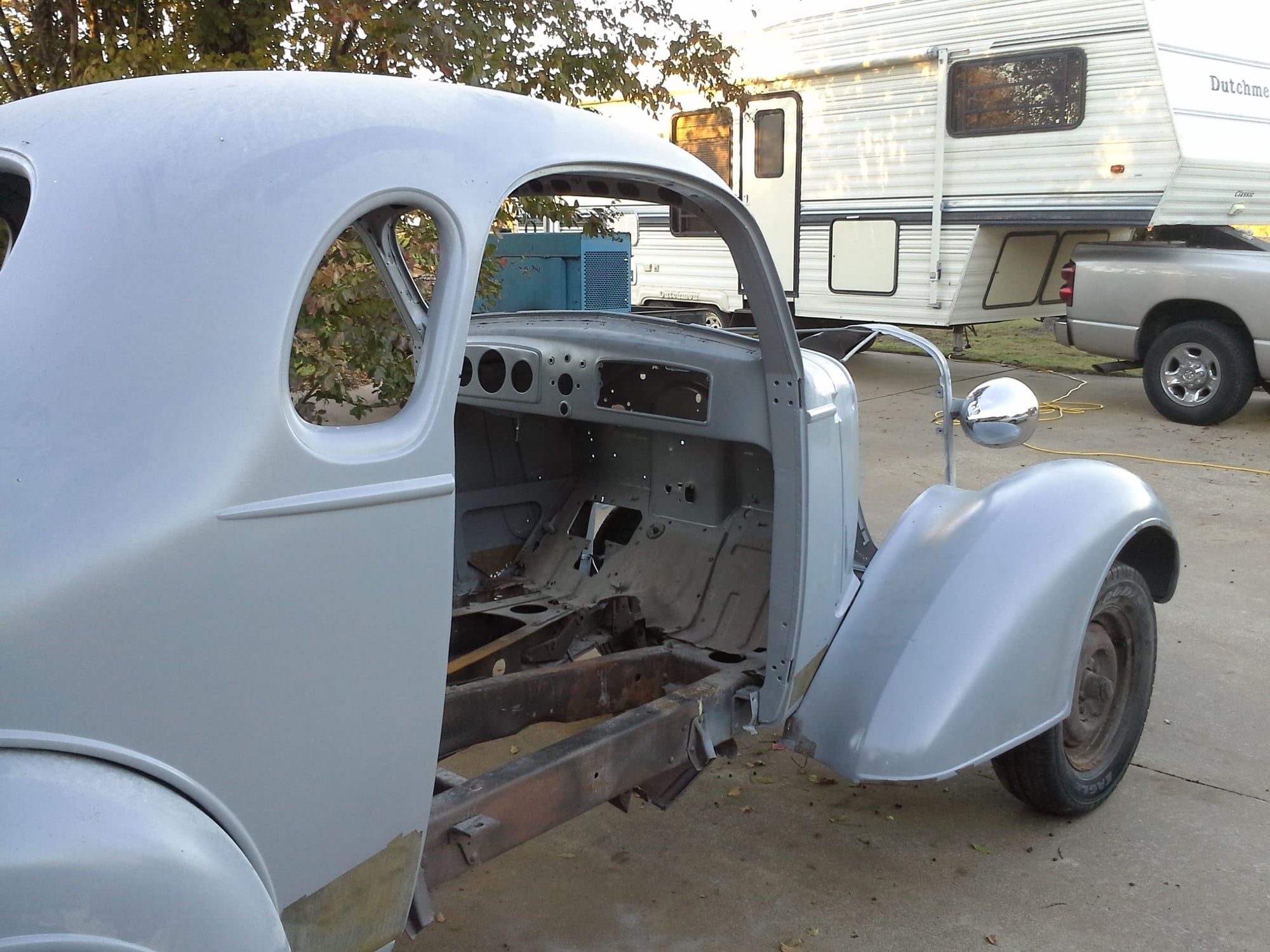
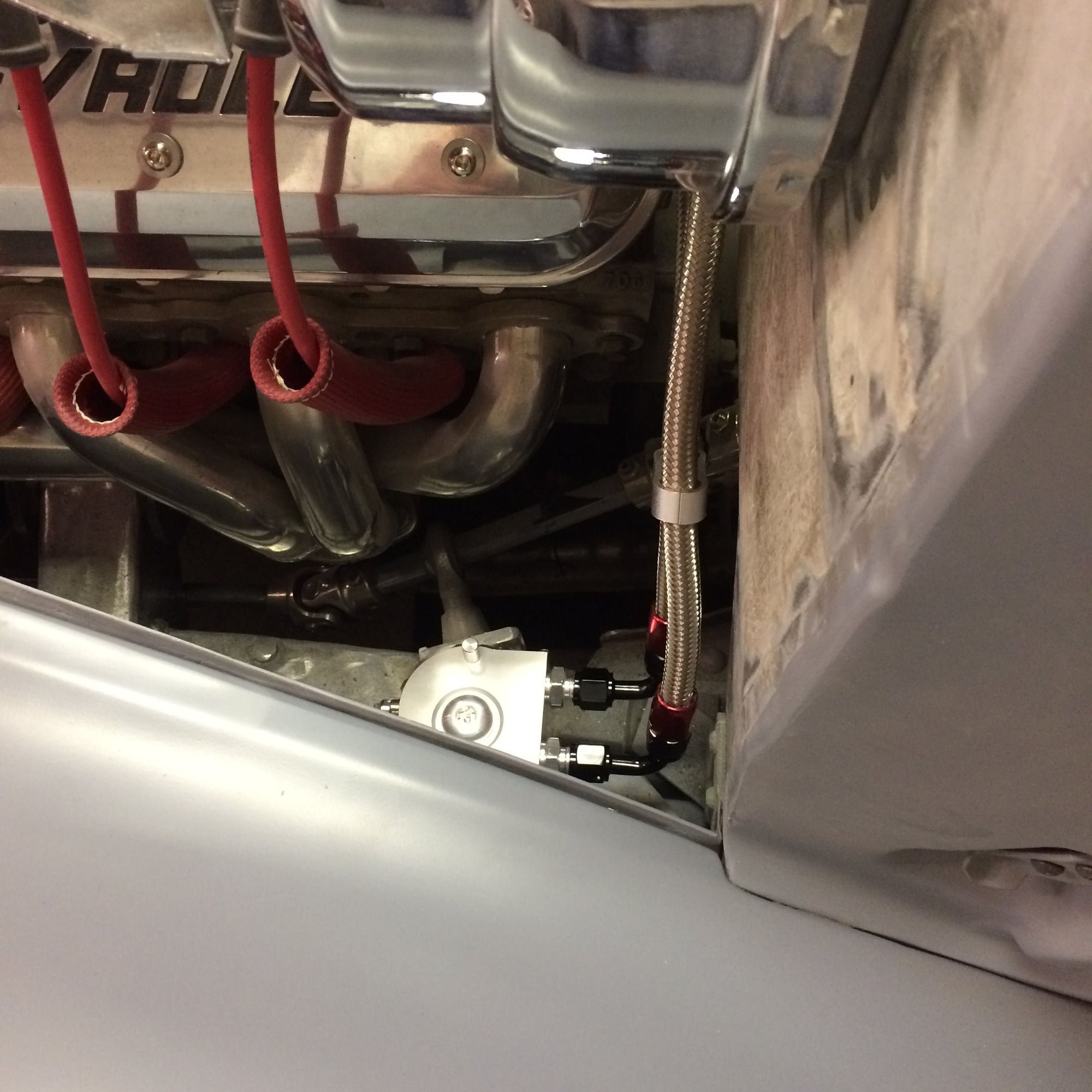


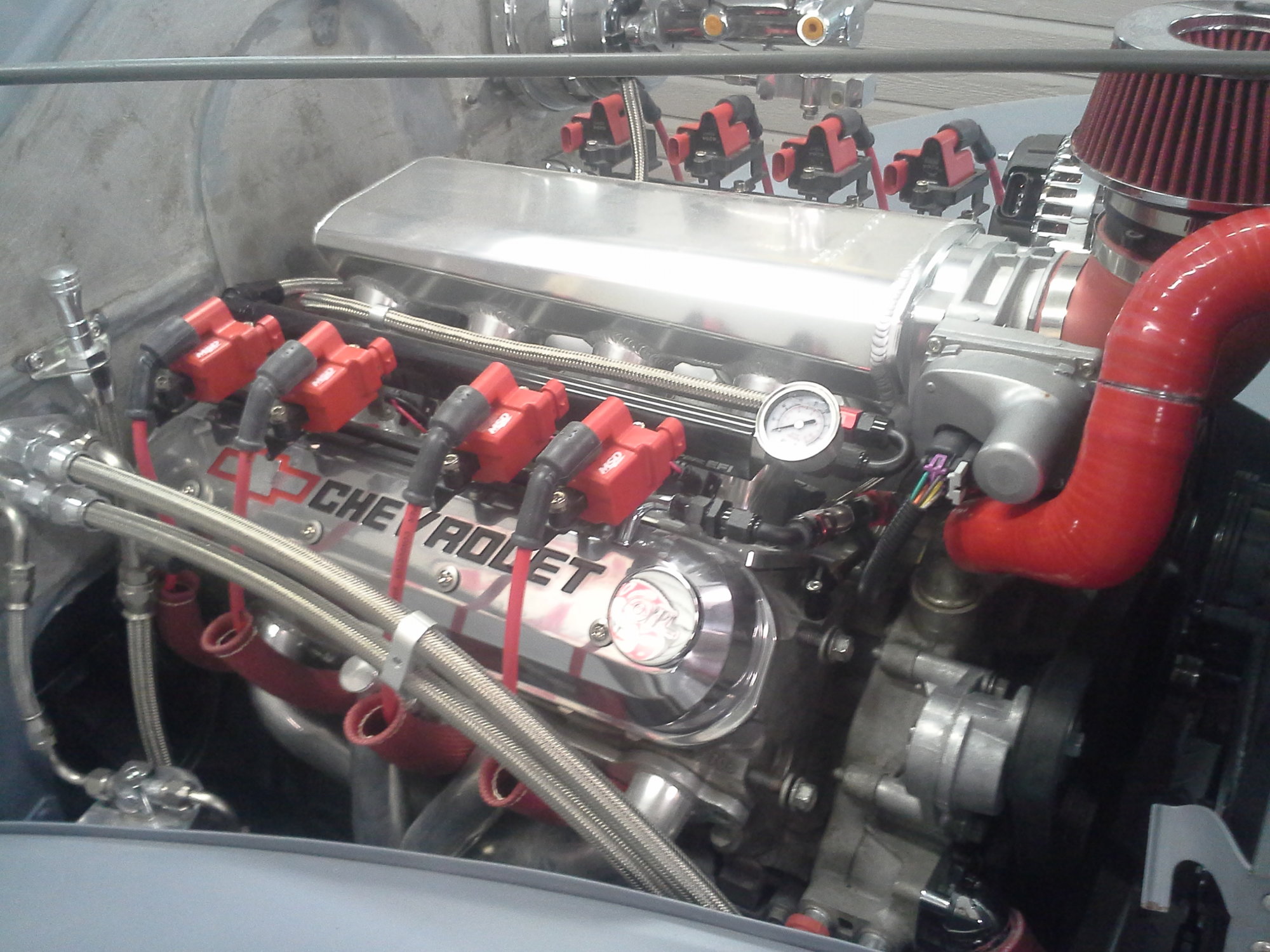

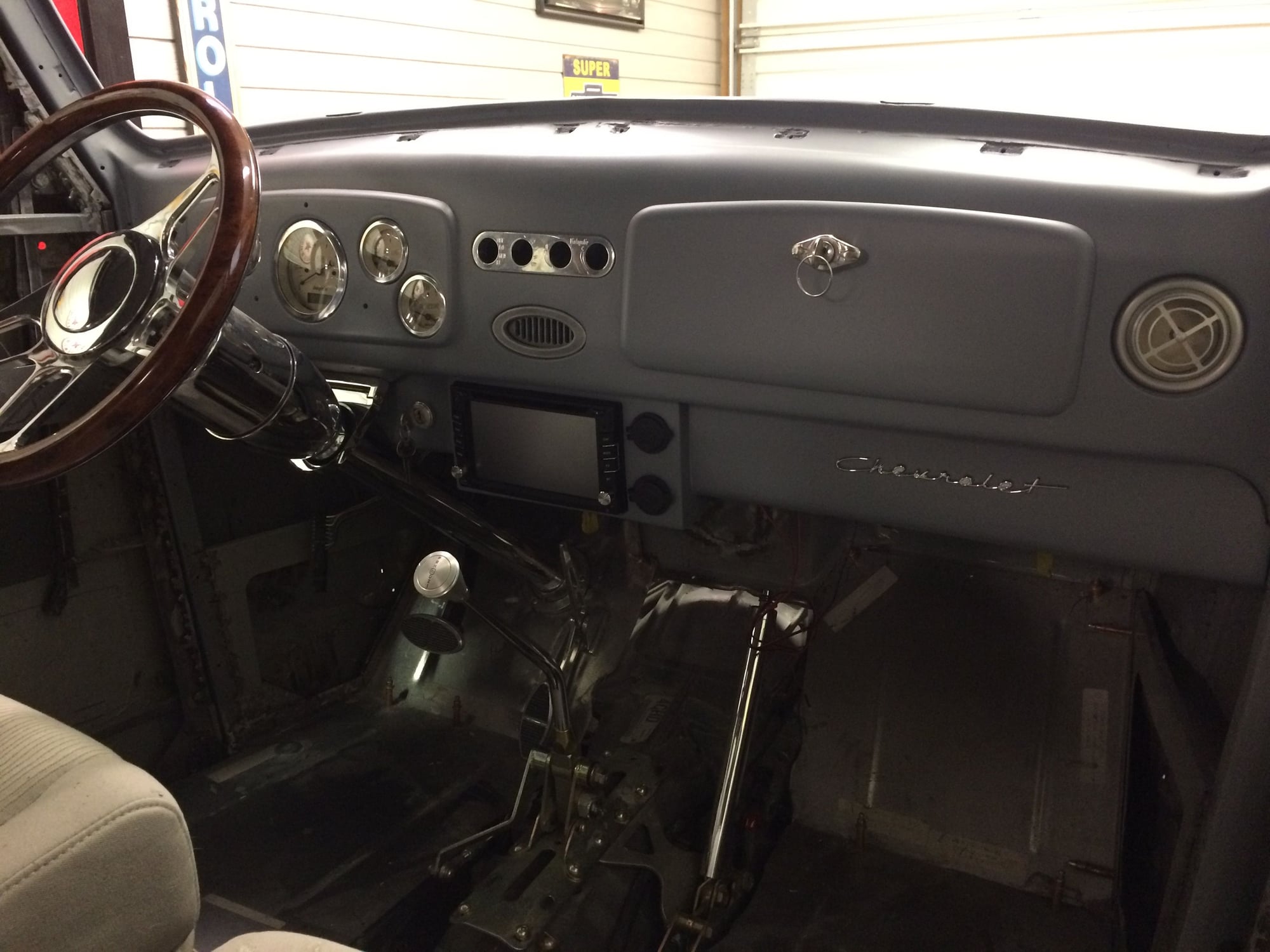
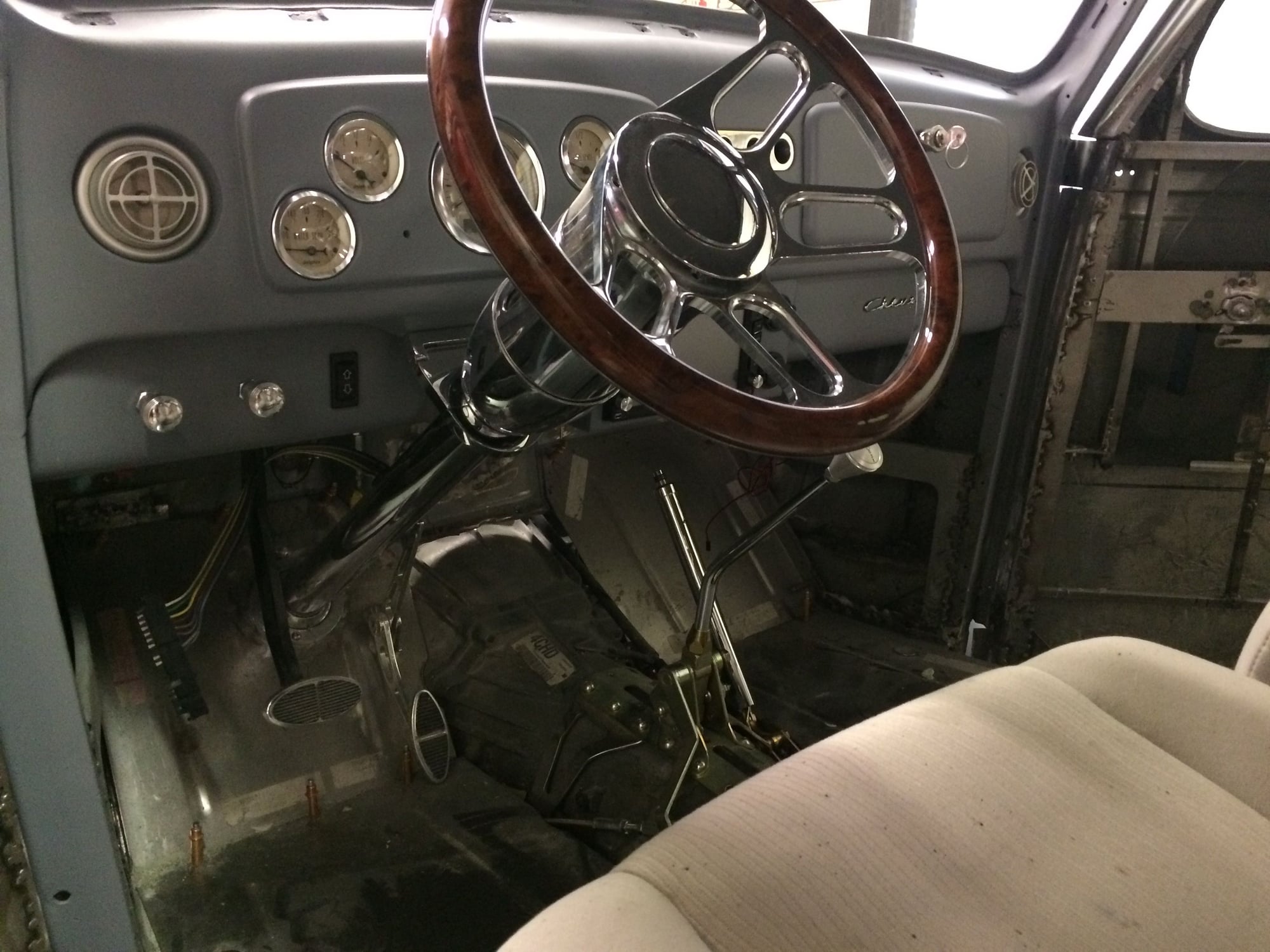
I finished up the PCV system tonight with a one way valve in place of a true PCV and utilized a catch can on the dirty side (DS) along with a one way valve on the clean side. If this works my goal of having every hose in the engine bay be SS braided will be complete and be very clean looking under the hood. After a long five year frame off build I am just a week or two away from finally being able to fire this LS Gen III off. Getting anxious to hear it run....hopefully!
#13
TECH Senior Member
Just watch... someone will look under the hood and ask, "Is that original?" Then tell them that the big shiny thing in the middle is the valve cover...


